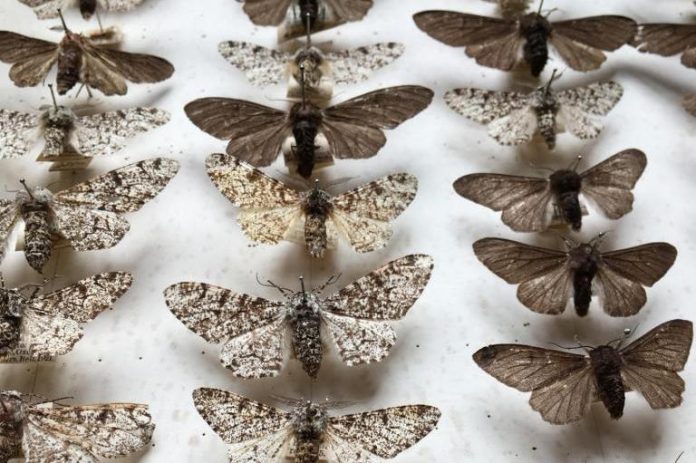
Aug. 19 (UPI) — Scientists have confirmed Darwin’s moth as a textbook example of the evolutionary phenomena known as industrial melanism. Researchers did so using image analysis and avian vision models, a first.
In the mid-19th century, famed evolutionary biologist Charles Darwin described the divergent forms of Britain’s peppered moth, Biston betularia.
Darwin realized the moth’s natural pale form was ideal for hiding on the lichen that grows on tree bark, but he also observed the prevalence of a secondary form, a darker variety, in forests affected by the soot spewed into Britain’s skies during the Industrial Revolution. The darker variety, Darwin surmised, only emerged in the wake of Britain’s pollution problems.
Darwin realized the dark form of the peppered moth blended seamlessly into soot-stained tree bark. As the soot problem in Britain persisted, tree lichen died off. Laws to curb pollution, however, curbed particulate emissions. As the lichen recovered, so did the pale form of the peppered moth.
Industrial melanism explains the emergence of the darker varieties in polluted areas.
Though scientists have re-examined the evolution of the peppered moth several times over, researchers had never before compared how the moth’s appearance affected predation and survival rates.
“This is one of the most iconic examples of evolution, used in biology textbooks around the world, yet fiercely attacked by creationists seeking to discredit evolution,” Martin Stevens, ecologist at the University of Exeter, said in a news release. “Remarkably, no previous study has quantified the camouflage of peppered moths, or related this to survival against predators in controlled experiments.”
Using digital image analysis, scientists adopted the perspective of birds and their ultraviolet vision. They measured how well the pale and dark forms of the peppered moth blend into bark and lichen — through birds’ eyes.
Scientists also baited moths and attracted birds, observing the predation rates among the two forms.
“Through a bird’s eyes, the pale peppered moths more closely match lichen-covered bark, whereas darker individuals more closely match plain bark,” said Exeter researcher Olivia Walton. “Crucially, this translates into a strong survival advantage; the lighter moths are much less likely to be seen by wild birds when on lichen-covered backgrounds, in comparison to dark moths.”
Researchers shared their analysis of Darwin’s moth this week in the journal Nature Communications.



